aka Eels for Dummies (written by the proud owner of 10 content linguinis)
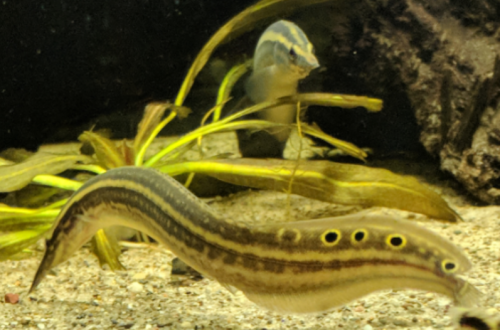
What is a Macrognathus eel?
A wonderful strip of fettuccine with a big ol’ bendy snout. These are the eels you want. The largest in the trade is M. aculeatus, sometimes called the lesser spiny eel, at 13" max. Keep in mind that this is a bendy piece of spaghetti. Its bioload and mass is approximately the same as a cichlid of half its length.

The smallest is M. pancalus, which is a whopping 5" on average; or the approximate width, length, and pointy-ness of a frequently sharpened pencil. For example, this is my tiny friend, Jeelius Caesar.
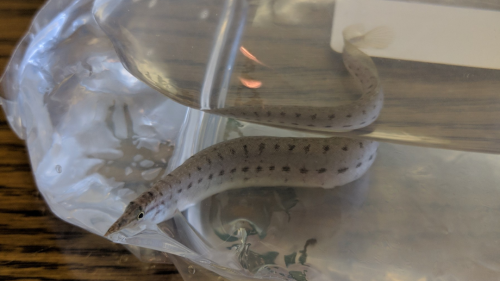
The most personable species is, in my experience, M. aral, the striped peacock eel. They’re sold at most PetSmarts, reach between 7" and 10", and you can comfortably fit a small colony in a 75 gallon aquarium.
I can’t say enough good things about these kids. My one boy, Dennis Reyneelds, will nap in the open at the front of the tank so he can greet me in the morning. He also likes to “help” me do maintenance by poking my hands and snootling between my fingers while I’m working. When it’s food time, he furiously wiggles around and smears his nose against the glass, or starts poking it above the water. Do yourself a favor and get an M. aral.
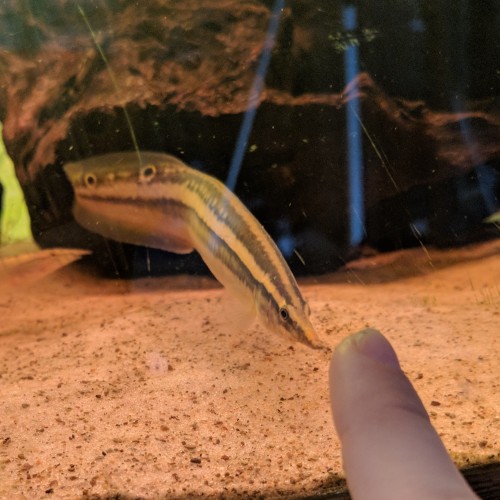
There’s also M. circumcintus (7"), M. zebrinus (10"), and M. meklongensis (8"). I currently have all of these. Very good little men. 10/10. They live in the same tank as my M. pancalus and M. aral. All of them get along swimmingly. If you can’t get multiple of one species, then the next best option is to get other similarly sized eels.
What is a Mastacembelus eel?
A real chunky water sausage that doesn’t belong in your tank. (Unless your tank is 300+ gallons and at least 4'x4’. [Except for Mastacembelus from Africa. Those aren’t valid and need to stay in their lakes])
Members of this family include the fire eel, polka dot eel, borneo giant python eel, and both tiretrack eels. They range between 14" and 40" as adults. By the 14" mark, a healthy eel will be 2" wide by 2" tall; or the approximate size of a large bratwurst. For example, here are two of my borneo giant pythons in their quarantine tank. Craigory and Nikolai now live with their pal Oliver in a 300 gallon 5'x6’ stock tub.

Feeding your pet shoelaces
With the exception of the African spiny eels, which are piscivorous goblins that we won’t be discussing; eels are insectivores. They’ll chow down on frozen bloodworms and probably stab a bitch for an earthworm. On occasion, they might begrudgingly eat adult brine shrimp, but they vastly prefer worms. Blackworms, bloodworms, red wigglers, nightcrawlers, and other squirmy critters should make up your eel’s diet. (For eels under 8", cut their worms into 1-2" pieces so they can swallow them.)
When you first get them, your eel is likely to be frightened and will stay cooped up in a hide all day long. Let them take their time to get used to you. Eventually, you’ll be able to hand-feed them; but in the mean time, you should place their worms in front of those hides before you turn off the lights at night. As they warm up to the Big Fleshy Thing, you can start offering them worms from your fingers. Longer earthworms work the best for this.
Personally, I feed my eels every 2 to 3 days, until they stop accepting food. (I used to feed them small amounts everyday. They started resembling breakfast sausages after a couple weeks.) A healthy eel is a filled-out eel, but they shouldn’t have a visibly distented stomach after feeding. This right here is a healthy wild eel. Aim for this. This is the optimal level of chunk.

In the case of Mastacembelus eels, you want them to be real meaty. The vast majority of Mastacembelus are owned by ~monster keepers~ who feed them incorrectly. Anything from this genus is supposed to be vaguely round. To keep them this size, feed generous amounts of earthworms every other day. Bloodworms just won’t cut it for these big boys. My 14" borneo pythons each get 6-7 full earthworms per meal.

Housing your sweaty noodles
Eels need to be kept on soft sand. There’s no exception to this. A well-adjusted eel will hurt their stomach by noodling over gravel, and a scared eel will injure itself by burying in it. Remember, an eel only buries in the substrate when it’s extremely frightened or stressed.
They also need a long, wide tank. A 48" x 12" footprint will do for nearly any Macrognathus. For Mastacembelus, you’re looking at 48" x 48" at minimum for a 12" eel, and ideally 72" x 72" for an 18" specimen.
Eels are active, curious little men who need plenty of hiding places and things to interact with. Also, make sure to provide an open area at the front of the tank for them to stretch their legs! Any and all things in the tank need to be free of jagged or rough edges. For this reason, malaysian driftwood is one of the best eel jungle gyms out there. They also appreciate plants to weave through and hide in.
Tankmates should be peaceful and preferably small for Macrognathus eels. I’ve had juvenile lambchop rasboras, honey gouramis, and other mild-mannered Southeast Asian friends with my children.
(pH ranges and tank parameters for these fellows are coming soon!)
Large goblin monstrosities
(if you’re eeled out, this is a good place to stop.)
These awful wretches are found exclusively in Africa; sometimes in rivers and other flowing bodies of water, but mainly in Lake Tanganyika. And because they live in rocky areas without any leaf litter and subsequent skittery critters, they’ve adapted to eat fish. Big fish. And lots of them.
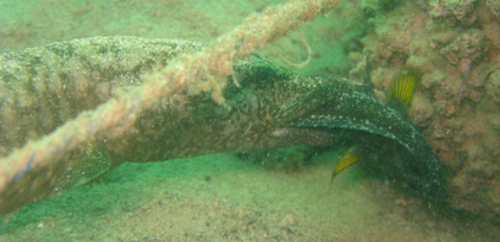
Ah, yes. And they grow to 15". At minimum. Regardless of species.

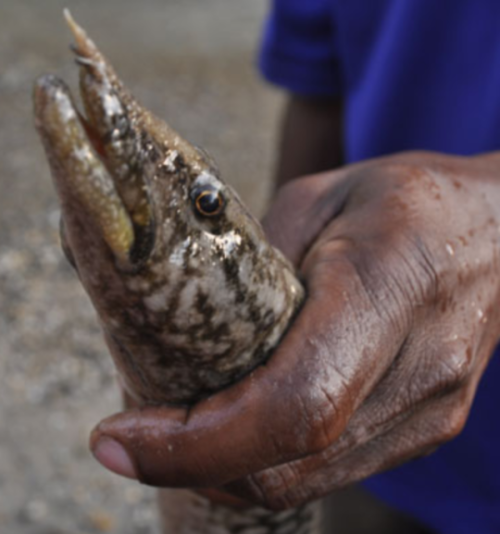
Let me repeat: African Eels Do Not Belong In Your Tank. Even in a 2000+ gallon Tanganyikan cichlid community, they will eat your other fish.
Now, how do you tell a Southeast Asian eel from an African, you ask? The length:width ratio is the easiest for juveniles. SA eels (the good ones) are normally proportioned throughout their lives, while African eels look like shoelaces. Take a look at this M. circumcintus from Borneo vs. the M. ellipsifer and M. frenatus from Lake Tanganyika below it.



The most clear “I’m not a good pet” sign is a rounded face. There aren’t any SA eels with this certain head type. However, it’s a distinct feature of M. plagiostoma, albomaculatus, and sp. “Rosette.”


And for pointy adults, as well as juveniles you still aren’t sure about, check out the mouth. As they eat fish, African eels have deep, large mouths that extend to or past their eyes. M. frenatus vs. the oh-so-popular (but-really-shouldn’t-be-popular) fire eel, M. erythrotaenia.

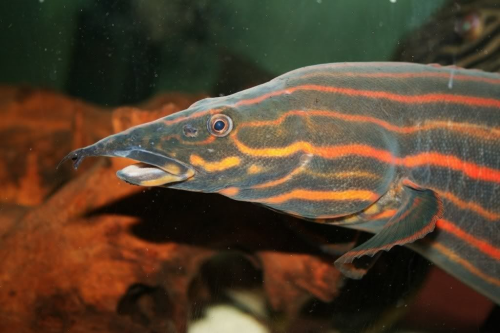
If you have any further questions about spiny eels, shoot me a message at @eelpatrickharris!



























